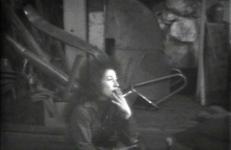
The ninety interviews produced by Lyn Blumenthal and Kate Horsfield between 1974 and 1988 exhibit a level of intimacy and authenticity that is startling when contrasted to today’s media savvy world. These interviews, recorded on early video equipment, evidence an era when those under the spotlight were less conscious of projecting a perfect and mediated “image”, and more interested in sharing ideas, experiences and histories. Within these early tapes, Blumenthal and Horsfield’s interviewees thoughtfully answer questions about their lives and work in ways that are both surprising and enlightening, while detailing the artistic choices they make on a day-to-day basis.
These compelling interviews, often shot in black and white, reveal the development of each artist’s trajectory, from first deciding to become an artist, to developing a practice and establishing a career. Many of the interviews are taped with artists at a fairly early stage in their artistic development; some artists are re-interviewed after a period of several years, accentuating developments in ideas and methodologies. The productions are small in size, often recorded with only the artist, camera operator and interviewer present, allowing for the development of a remarkably intimate atmosphere, and revealing profound insights into the lives and work of the subjects.
Averaging an hour in length, the interviews are edited from the original footage in order to distil the content to the most important and relevant dialogue. The camera focuses close-up on the artist, with the interviewer out-of-frame, though their voices can be heard asking questions and seeking clarifications, and occasional cigarette smoke floats across the screen. This stripped down format ensures that the viewers’ attention is focused on the interviewee, and the dense and often complex descriptions of the creative process that each artist reveals.
The series ended with Lyn Blumenthal’s untimely death in 1988.
Judy Chicago (b.1939) creates large-scale, collaborative artwork has brought greater prominence to feminist themes and craft arts such as needlework and ceramics. Her most famous work, The Dinner Party (1979), was an enormous collaboration with hundreds of volunteers including ceramicists, china painters and needleworkers. The monumental finished piece has place settings for 39 mythical and historical famous women, writing them back into the heroic history usually reserved for men. Earlier in her career, Chicago was part of the Finish Fetish movement within Minimalism.
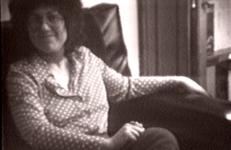
Chuck Close (b.1940) has been a leading figure in contemporary art since the early 1970s. As a young artist in the mid-’60s, Close turned away from the model of Abstract Expressionism to develop a simple but labor-intensive working method based upon repetition and small color elements. Denying himself expressive gesture, Close builds shapes and tonal variations within a working grid that provides the structure for large-scale, close-up portraits. Close’s formal analysis and methodological reconfiguration of the human face have radically changed the definition of modern portraiture.
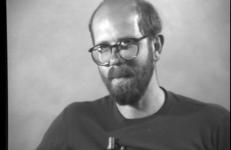
A. D. Coleman started writing regularly on photography in 1967 for the Village Voice, at a time when very few critics took the medium seriously. His work, according to Joel Eisinger, qualified him as perhaps "the first postmodernist critic" in the field. After his tenure at the Voice, Coleman became the first photography critic at The New York Times, and has since published in numerous publications internationally on mass media, communication technologies, art, and photography.
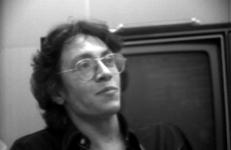
Jim Dine (b. 1935) first emerged as an avant-garde artist creating Happenings and performances with Allan Kaprow, Claes Oldenburg, and others in the early 1960s. Ultimately, he rejected the performances that led to his early success in favor of an introspective search for identity. Using banal objects as subjects for his paintings and prints, Dine displayed a growing sense of self-awareness.
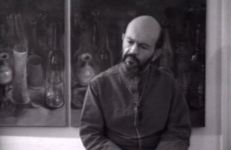
Rackstraw Downes’s “observation” paintings, executed on-site at ponds, intersections, and baseball parks, began as a mischievous response to the dogma of style and modernist criticism.
“There was a tremendous intellectual back-up, essentially against a lot of the figurative painting being done in the ’60s,” Downes says in this interview with Robert Storr. “If I show my slides in an art school I’ll get, 'Your paintings are very nice but how can you go backwards from Cézanne?’”
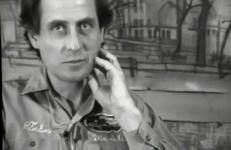
Eric Fischl's early works were large-scale abstract paintings. While teaching in Nova Scotia, Fischl began to shift from abstraction to smaller, image-oriented paintings, beginning with narrative works that investigated a fisherman's family. By the time Fischl left Halifax the narrative element was gone, but the subject of family melodrama remained. In the '80s Fischl's large figurative paintings, aggressive in their confrontation with the viewer, began to receive attention.
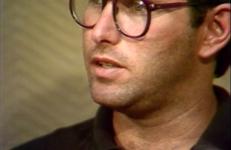
Louise Fishman (b.1939) is an abstract painter who uses knives rather than brushes to apply her undiluted colors. Her complex compositions place architectural shapes within other shapes.
“Almost everything is covered in my paintings. I go through numerous changes in them. I used to think that I was losing a lot of images. More recently I discovered that I was travelling through a process where an image would come back not exactly as it had been before. My unconscious memory is alive,” she says in this interview with Kate Horsfield.
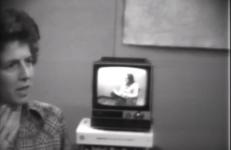
Audrey Flack uses an airbrush to produce large photorealistic paintings and works from slides for her precision. She selects subjects with great personal significance that also represent fragments of contemporary American life. The three paintings discussed in detail in this tape are from the Vanitas series.
“Every still-life painter has her bag of tricks. You have your prop closet and just pull them out,” Flack says in this interview with Kate Horsfield. “One of the beauties of being an artist is that no one can tell me what to paint.”
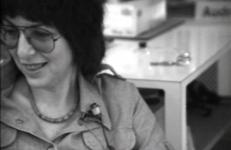
In the 1960s and '70s, Hollis Frampton (1936-1984) emerged as one of the most important experimental filmmakers, creating structuralist works such as Zorns Lemma (1970), Poetic Justice (1972), and Nostalgia (1973).
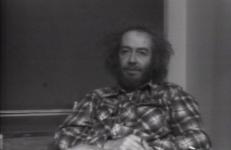
Buckminster Fuller (1895-1983) was both a pioneer architect of the modern era and a global theorist. Fuller developed a system of geometry that he called “Energetic-Synergetic geometry,” the most famous example of which is the geodesic dome. His many designs for automobiles and living spaces were applications of a wider theory.
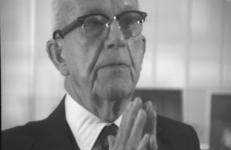
Allen Ginsberg (1926-1997) was a leading American poet who gained notoriety in the 1950s and ’60s through his association with the Beat Generation and the San Francisco Renaissance. One of the most controversial poets of his time, his book Howl and Other Poems faced an obscenity trial in 1957 and became one of the most widely read poems of the 20th Century. In the '60s and '70s, Ginsberg studied under gurus and Zen masters.

Ron Gorchov (b. 1930) is an American artist who has been working with curved surface paintings and shaped canvases since 1967. He paints on convex/concave saddle-shape canvases with recurring pairs of symmetrical, oar-like images.
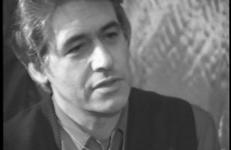
Nancy Graves (1939-1995) was a New York sculptor, painter, and filmmaker who used natural history as a reference for dealing with the relationships between time, space, and form. Her work shows the formative influence of the natural sciences, history, art, and cultural studies that she encountered as a child. After majoring in English Literature at Vassar, Graves studied painting at Yale with Jack Tworkov, Alex Katz, and Al Held, among other artists and traveled extensively, spending time in Paris and Florence.
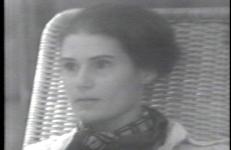
Nancy Graves (1939-1995) was a New York sculptor, painter, and filmmaker who used natural history as a reference for dealing with the relationships between time, space, and form.
In this interview she discusses her transition from a static form (sculpture) to a moving form (film), and finally, to painting. “The making of it and the viewing of it are the areas with which I’m most concerned, because I’m an artist, not a philosopher,” Graves says in this interview with Kate Horsfield.
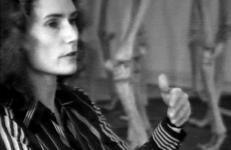
Best known for her carved wooden heads wrapped in black leather affixed with zippers, glass eyes, enamel noses, spikes and straps, Nancy Grossman (b.1940) is accomplished in draftsmanship, assemblage, and relief sculpture as well as carvings. After growing up on a farm in upstate New York, Grossman went to Pratt, where Richard Lindner’s emphasis on the figure and in the integrity of his personal syntax became an influence. In the 1960s her head sculptures brought her notoriety and five solo exhibitions before the age of thirty.
